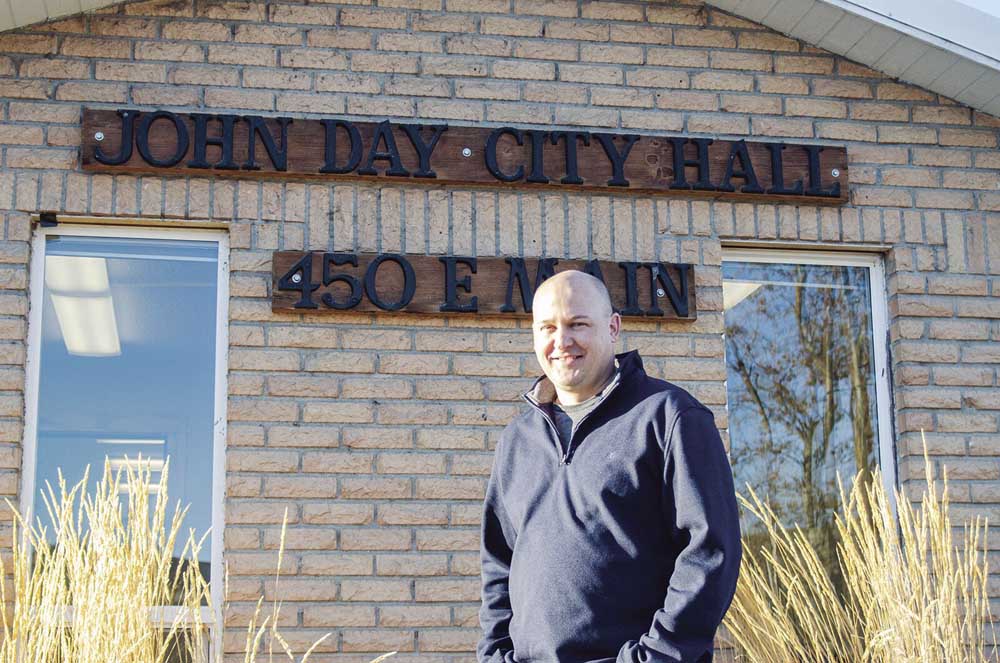Ranchers concerned over Dean ranch cattle
Published 8:00 am Tuesday, January 25, 2022

- Warnock
WALLOWA COUNTY — Wallowa County ranchers are concerned both for the cattle under their care and their reputations in animal husbandry, not to mention the future of ranching in the county, rancher and Wallowa County Stockgrowers President Tom Birkmaier said last week.
Caring for the cattle
“As a whole, ranchers and livestock owners in this county deeply care for the health and well-being of their animals. It is important that we view this for what it is; an unfortunate situation brought on by a combination of mismanagement, poor decisions and challenging weather conditions,” Birkmaier said in a written statement Wednesday, Jan. 19. “As difficult as it may have been, the cows should have been brought out of that country a month or two sooner. Our local cowboys are some of the best. They would’ve assisted the Bob Dean ranch hands and gotten the cows out of there.”
Birkmaier and Adam Stein, another county rancher who was instrumental in rescuing the cattle and spotting them from the air, said that at least 29 cows are known to have perished in the deep snows and steep terrain of the Grouse Creek Ranch in the Upper Imnaha owned by Louisiana developer Bob Dean.
B.J. Warnock, who until Wednesday, Jan. 26, was manager at the ranch, said in a Jan. 2 email that when he and his ranch hands began gathering cattle in September, there were 1,613 mother cows on summer range, of which 10 were unrecoverable. He said 1,548 Dean Oregon Ranches mother cows were successfully gathered by the ranch crew before the snow. After the snow, 34 mother cows were gathered, of which 26 were Dean cattle; the others were owned by neighboring ranches. Warnock said at that time aerial and ground searches were conducted with the hope of bringing in the remaining 29 cows.
Stein confirmed Jan. 20 that he took Warnock up in his plane approximately Dec. 21 and 27 to look for the missing cattle.
“He talked like he was going to put some people on it,” Stein said. “I think they had a lot going on at the time. That’s why I got involved because something needed to happen.”
As for the actual number of cattle lost, Birkmaier said that won’t be known until herded cattle can be compared with those listed with the Oregon Department of Agriculture.
Stein and Birkmaier agreed that they and other ranchers have been willing to help out.
“In Wallowa County, everybody needs to get along,” Stein said. “It looks bad for ranchers. People from the cities think, ‘Why are those cows out there?’ ”
Stein and Birkmaier said some of the cattle caught in the deep snows had recently calved and were trying to keep their calves alive.
“The nutritional requirements of a lactating cow with a 1-2-month-old calf are quite high,” Birkmaier said. “The protein and energy requirements are two times that of a cow that is not producing milk. This whole incident was made worse by that fact. The cows just had no fat reserves to draw from and with available forage covered in snow, they literally ‘milked themselves to death,’ in an attempt to provide for their calves. … Those cows starved to death trying to feed their calves milk,” he said, adding that they got too weak to survive themselves. “They were putting all their nutrition into their milk.”
While a number of the lactating mother cows were lost, Birkmaier said, “fortunately, many of the 1-2-month-old calves were saved.”
From the ranch
On Jan. 18, Warnock said by email that he put in his two-weeks’ notice Jan. 12.
Wallowa County Sheriff Joel Fish, whose department is investigating for possible animal neglect, said the Deans brought in a new ranch manager, Katie Romero.
When contacted Jan. 24, Romero said she is from “out of state” and her boss, Bob Dean’s wife, Karen Dean, had instructed her to not answer questions from the press.
In a phone call right after that, Karen Dean also declined to comment, saying, “I don’t have anything to say to you,” before hanging up.
Fish referred questions to the Deans’ legal counsel, Joseph Law Firm of La Grande, but no comment was received after numerous emails and voicemails were left over the past two weeks.
Fish said his investigation is continuing and has not determined if charges will be brought.
Wolves in the mix
Stein again overflew the area where the Dean cattle were and saw signs of wolf predation. He said Jan. 20 that what he saw so far were signs that wolves had dug up cattle that had been buried in the snow and were likely dead.
“I’m sure they were dead before” the wolves came, he said.
He did not see any evidence of wolves attacking live cattle. However, he and Birkmaier agreed giving wolves a taste of beef under such circumstances can whet their appetite for live cattle.
“I think it will have an impact,” Stein said. “Typically, when wolves start working cows over, (ranchers) will try to get rid of the wolves that are eating beef. … Typically, when wolves start working on cattle, they won’t quit.”
Birkmaier agreed, saying adding beef to wolves’ diet indeed makes it more likely they’ll attack cattle.
“The problem is that it teaches them to eat beef, and that whole area will be attractive for wolves if there’s cows out there again,” he said. “Elk and deer are their primary diet, but occasionally we have a problem with them attacking livestock.”
Birkmaier said he regularly uses nonlethal methods such as noise, light and a human presence to keep wolves at bay. But it isn’t always effective.
He said normal losses during the period from April to October — the time cattle are on summer range in the national forests — is usually about 1% to death from diseases or other natural causes. Since the reintroduction of wolves, those losses have risen to 3% to 5%, he said.
He said his herd experiences almost zero losses during the winter when they are on his Crow Creek ranchland and under constant supervision.
The ranching community
Birkmaier agreed the Dean ranch had a greater challenge with about 1,500 cattle, but they also have six or seven ranch hands.
“It seems like that ranch had plenty of help,” he said. “I know all the workers and they are good hands. I just can’t figure out why they didn’t get the cattle gathered.”
As Stockgrowers president, Birkmaier said he feels a need to speak out for his fellow ranchers.
“So many are telling me (they agree), but they’re not willing to step out and say something,” he said.
However, many have been willing to help with the emergency, which is now drawing to a close.
“After nearly a month of nightly conference calls, the rescue process is wrapping up. We just didn’t have anyone willing to step up and lead the recovery operations. County Commissioner (Todd) Nash set up a conference call-style meeting where volunteers, ranchers and agency persons could set up strategies and coordinate plans for rescuing the cows. It created a perfect platform for the communication that was necessary and was quite effective,” Birkmaier said. “We relied so heavily on not only Adam Stein’s flying skills, but his ability to snowmobile, groom trails and deliver hay to the cows. He just knows that country so well and usually directed the extraction method that would be the most effective.”





